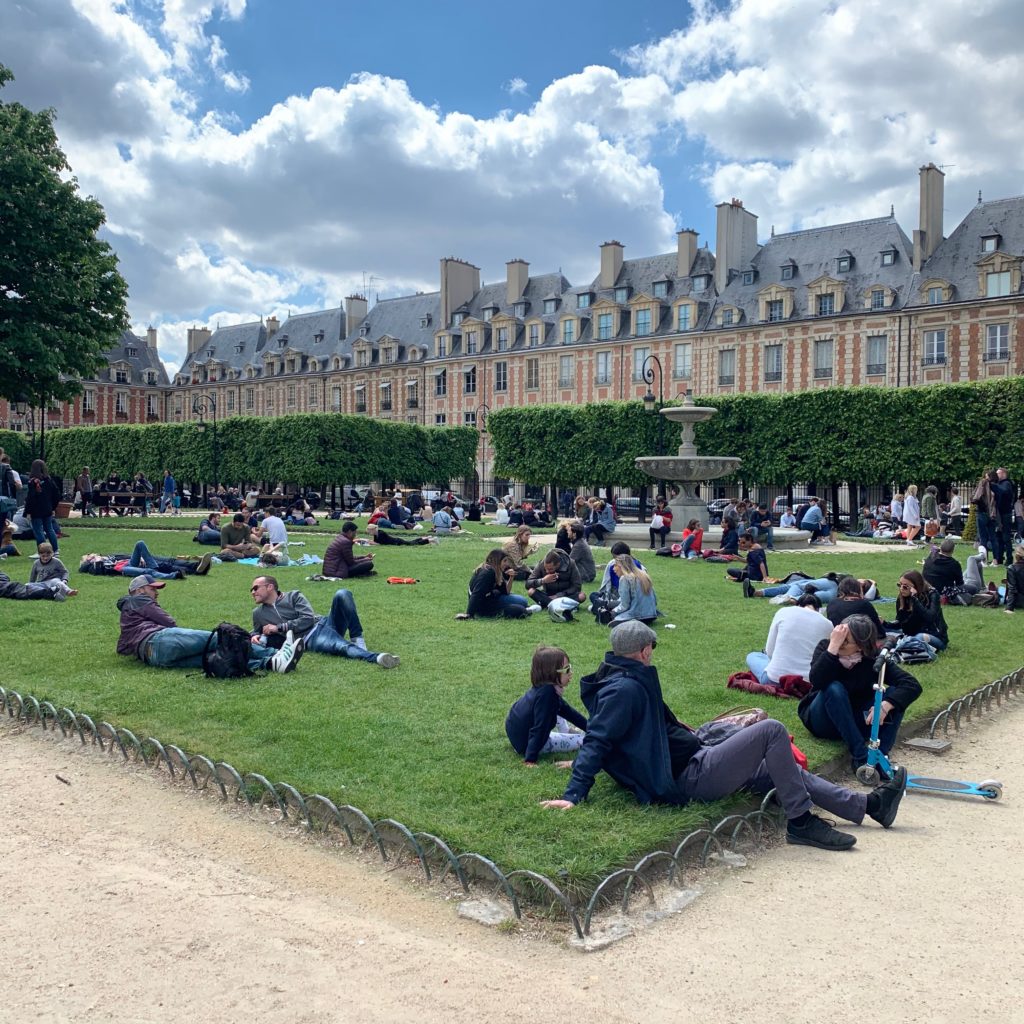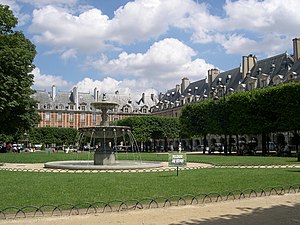A Full Guide to Place des Vosges Paris France
A Full Guide to Place des Vosges Paris France
Blog Article
A Comprehensive Overview to the Architectural Beauty of Area Des Vosges
Location Des Vosges, established in the very early 17th century, exhibits the building class of its time, using a special peek right into the unified design principles of the French Renaissance. The square's thoroughly prepared red-brick facades, punctuated by sophisticated stone detailing, show a dedication to proportion and aesthetic equilibrium that was revolutionary for its period. Significant spots within this historic website not just improve its aesthetic appeal however also enhance its story. As we explore the detailed components that specify this famous square, one should consider the more comprehensive implications of its layout on city design.
Historical Background of Location Des Vosges

The square was developed as component of a wider effort to enhance the city landscape of Paris, incorporating ideals of proportion and order (place des vosges opening hours). Completed in 1612, the square included uniform façades, which were embellished with red brick and rock, producing an unified aesthetic that proceeds to influence city preparation today
Throughout the centuries, Area Des Vosges has actually served numerous duties, from a royal home to a vibrant public area, adjusting to the altering political and social landscape of France. Its value is more underscored by its organization with remarkable figures, consisting of the renowned writer Victor Hugo, who lived there. Today, it stands as a valued historic website, embodying the rich story of Parisian architectural and cultural heritage.
Architectural Functions and Layout
Defined by its balanced format and cohesive architectural design, Location Des Vosges showcases a remarkable blend of Renaissance and classical design components. The square is mounted by 36 similar red-brick homes adorned with rock details, creating a harmonious aesthetic experience - place des vosges tickets. Each façade includes a series of arched windows and elegant dormer windows, contributing to the general proportion of the ensemble
Making use of pointed arcs is a significant function, enhancing the verticality of the buildings which is common of the French Renaissance. Ground-level games give a protected pathway, inviting visitors to leisurely walk while delighting in the building ins and outs. The roofs, defined by high slopes and slate tiles, further highlight the uniformity while enabling efficient rainwater drainage.
Landscaping within the square likewise plays a vital role in its style, with manicured gardens and courses that resemble the geometric precision of the architecture. The main water fountain adds a prime focus, complementing the harmony of the surrounding area. Jointly, these architectural functions not just reflect the visual appeals of very early 17th-century France but also highlight the sustaining legacy of Place Des Vosges as an excellent version of metropolitan preparation and layout.
Noteworthy Landmarks and Structures
In the middle of the building elegance of Place Des Vosges, a number of significant landmarks and structures stand out, each adding to the square's historic and social significance. The most famous of these is the Hôtel de Sully, an elegant instance of 17th-century style, which now houses the Centre des Monuments Nationaux. Its grand frontage and intricately created courtyard mirror the luxury of its period.

The square is likewise flanked by a collection of the same block and rock residences, identified by their stylish galleries and unified proportions. These frameworks not just More Info provide a sense of unity within the square however additionally function as a home window into the architectural methods of the time.
Gardens and Green Spaces
Snuggled within the vivid surroundings of Area Des Vosges, yards and environment-friendly rooms provide a tranquil comparison to the square's building grandeur. This historic square, known for its balanced layout and rich history, is complemented by diligently maintained gardens that welcome both leisure and representation.

Benches tactically placed throughout the yards motivate visitors to rest and absorb the peaceful atmosphere. Seasonal flowers grow in vibrant colors, including a vibrant aspect to the views. Furthermore, the interplay of light and shadow cast by the bordering 17th-century buildings creates an exciting ambience, further enhancing the experience.
In this harmonious blend of nature and design, the gardens of Location Des Vosges are not merely an accessory to the square's elegance; they are an important component of its charm, inviting all to stop briefly and take pleasure in the tranquil setting.
Site Visitor Info and Tips
Planning a visit to Place Des Vosges requires thoughtful factor to consider to totally appreciate its architectural elegance and serene gardens. Located in the heart of the Marais district, this historical square is conveniently obtainable using public transport, with the nearby city station being Bastille.
For an optimum experience, consider checking out during weekdays to prevent the weekend break groups. Morning or late afternoon brows through provide the very best light for photography, enhancing the charm of the bordering 17th-century style.
It is a good idea to use comfortable shoes, as the rock paths can be irregular. In addition, bringing a picnic is a delightful way to delight in the lush plant; however, be conscious of maintaining the tidiness of the area.
While discovering, make the effort to appreciate the square's distinct art galleries and boutiques. Toilets are restricted, so strategy as necessary.
Last but not least, don't miss the chance to check out the Maison de Victor Hugo, located at number 6, which provides understanding right into the life of the well known author who stayed there. With cautious planning, your check out to Place Des Vosges will be a memorable expedition of Parisian heritage and harmony.
Conclusion
In summary, Location Des Vosges exemplifies the building splendour of early 17th-century France, identified by its symmetrical format and harmonious design. As one of Paris's the majority of distinguished sites, Area Des Vosges stays a crucial piece of the city's architectural and social heritage.
Place Des Vosges, established in the very early 17th century, exemplifies the building sophistication of its time, using an unique glimpse into the harmonious layout principles of the French Renaissance.Identified by its balanced design and natural architectural design, Location Des Vosges showcases an impressive blend of Renaissance and classic design aspects. Jointly, these building functions not just reflect the appearances of early 17th-century France but likewise emphasize the enduring tradition of Place Des Vosges as an excellent version of metropolitan preparation and layout.
Among the architectural natural beauty of Place Des Vosges, a number of remarkable sites and structures stand out, each adding to the square's historic and social importance.In summary, Area Des Vosges exemplifies the architectural grandeur of early 17th-century France, identified by its balanced format and harmonious design.
Please visit one of our local supporters - Mustang Carbon Porsche Recaro Seats
Report this page